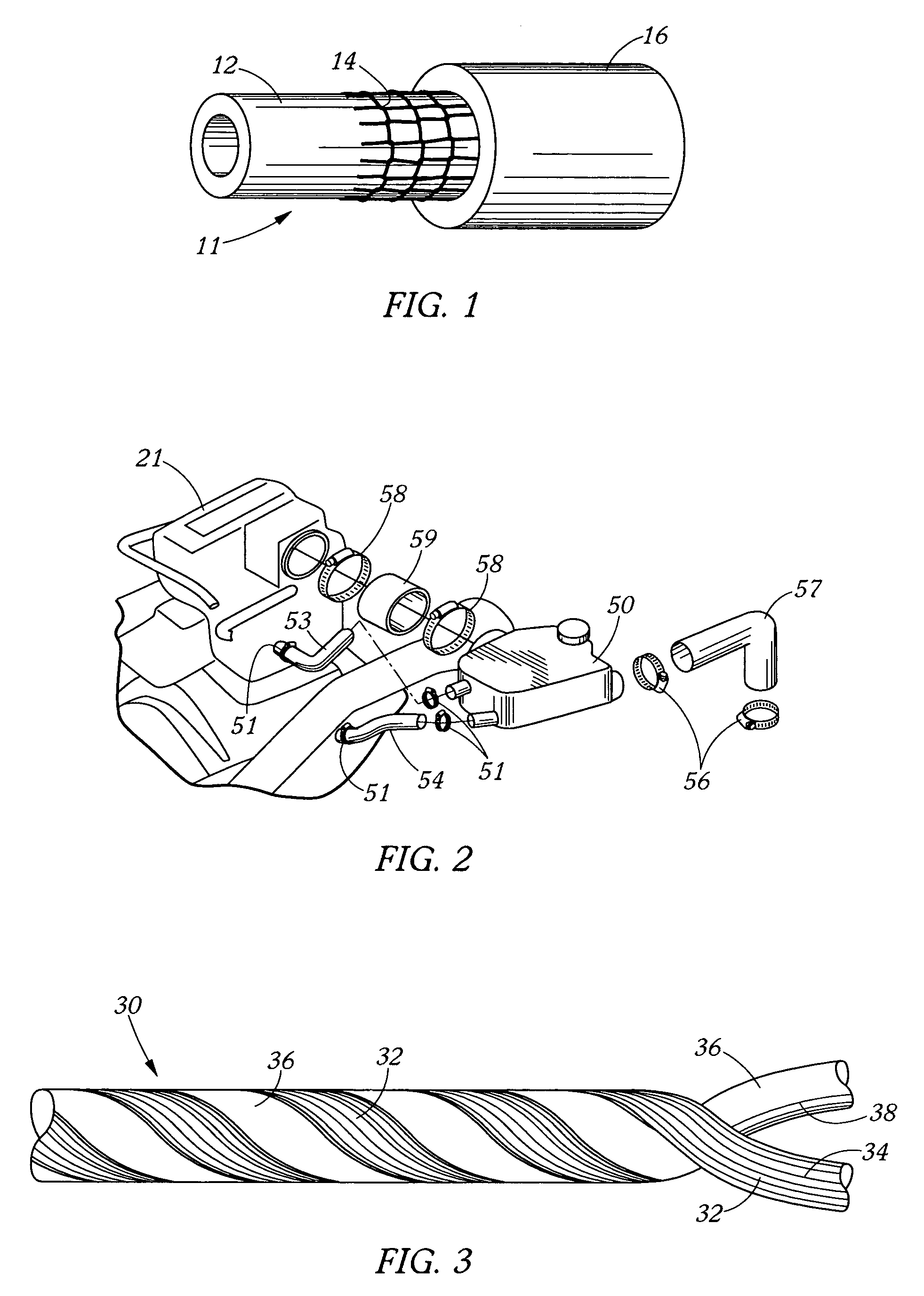Fluid transfer hose reinforced with hybrid yarn
a technology of hybrid yarn and transfer hose, which is applied in the field of transfer hose, can solve the problems of kink bands, less strength of knit reinforcement than braiding, and tendency to unravel if a yarn is broken, and achieve the effects of increasing adhesion, dramatic performance improvement, and promoting yarn adhesion
- Summary
- Abstract
- Description
- Claims
- Application Information
AI Technical Summary
Benefits of technology
Problems solved by technology
Method used
Image
Examples
Embodiment Construction
[0016]Referring to FIG. 1, a hose is illustrated, constructed according to one embodiment of the present invention. Hose 11 comprises inner tube 12, reinforcing fabric member 14 knit over inner tube 12, and outer cover 16 positioned over knit reinforcement member 14 and inner tube 12. Tube 12 may comprise one or more layers of one or more flexible materials such as an elastomer or a plastic. The inner surface material of the tube may be chosen to withstand the fluids and environmental conditions expected within the hose. Cover 16 may be made of one or more suitable flexible elastomeric or plastic materials designed to withstand the exterior environment encountered. Tube 12 and cover 16 may be made of the same material. Hose 11 may be formed by methods such as molding, wrapping, and / or extrusion.
[0017]According to the invention, reinforcing fabric member 14 comprises a hybrid yarn. FIG. 3 illustrates an embodiment of a hybrid yarn according to the invention. Base yarn 32 comprises fi...
PUM
| Property | Measurement | Unit |
|---|---|---|
| pressure | aaaaa | aaaaa |
| temperatures | aaaaa | aaaaa |
| internal pressure | aaaaa | aaaaa |
Abstract
Description
Claims
Application Information
 Login to View More
Login to View More - R&D
- Intellectual Property
- Life Sciences
- Materials
- Tech Scout
- Unparalleled Data Quality
- Higher Quality Content
- 60% Fewer Hallucinations
Browse by: Latest US Patents, China's latest patents, Technical Efficacy Thesaurus, Application Domain, Technology Topic, Popular Technical Reports.
© 2025 PatSnap. All rights reserved.Legal|Privacy policy|Modern Slavery Act Transparency Statement|Sitemap|About US| Contact US: help@patsnap.com


